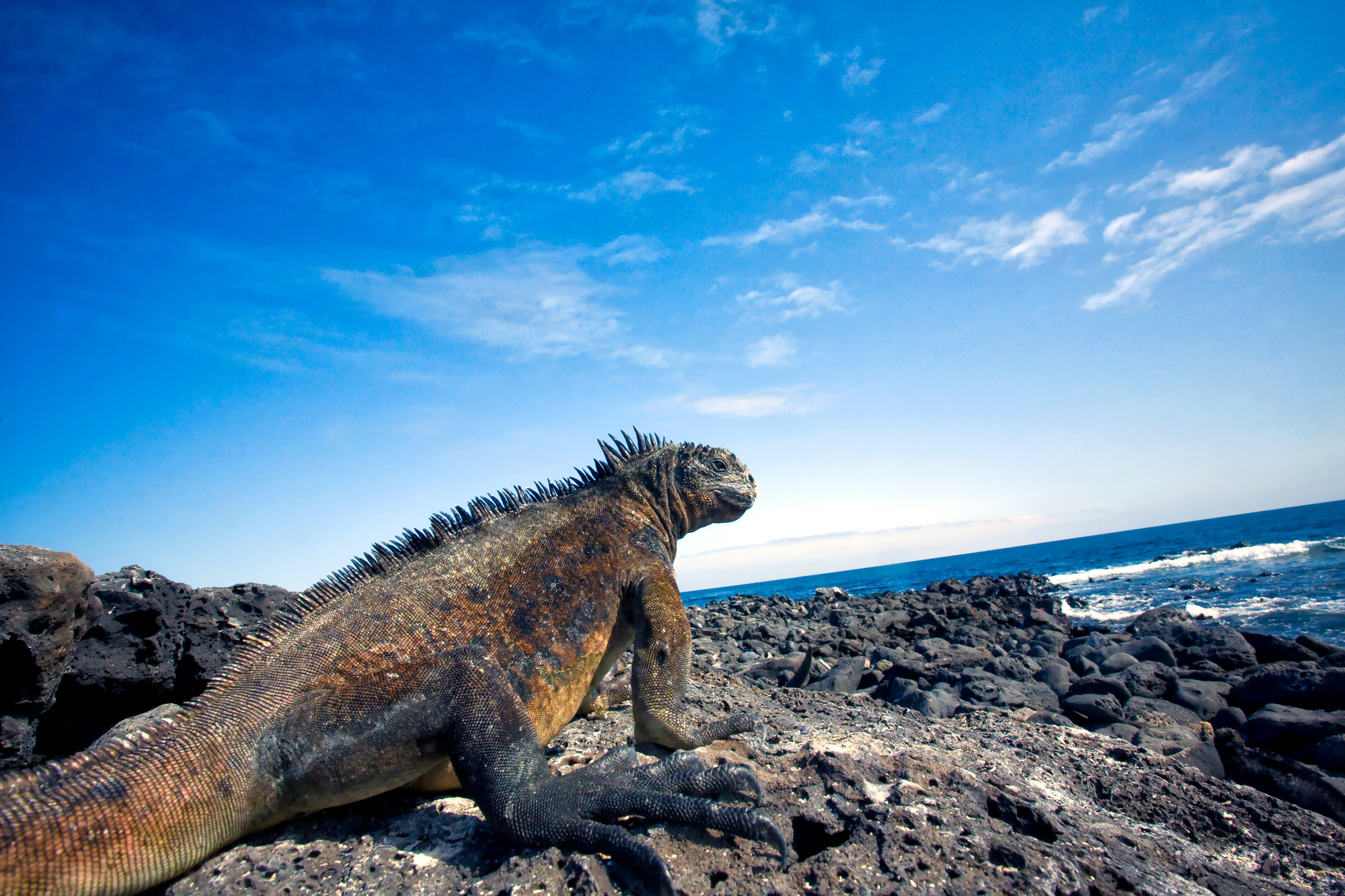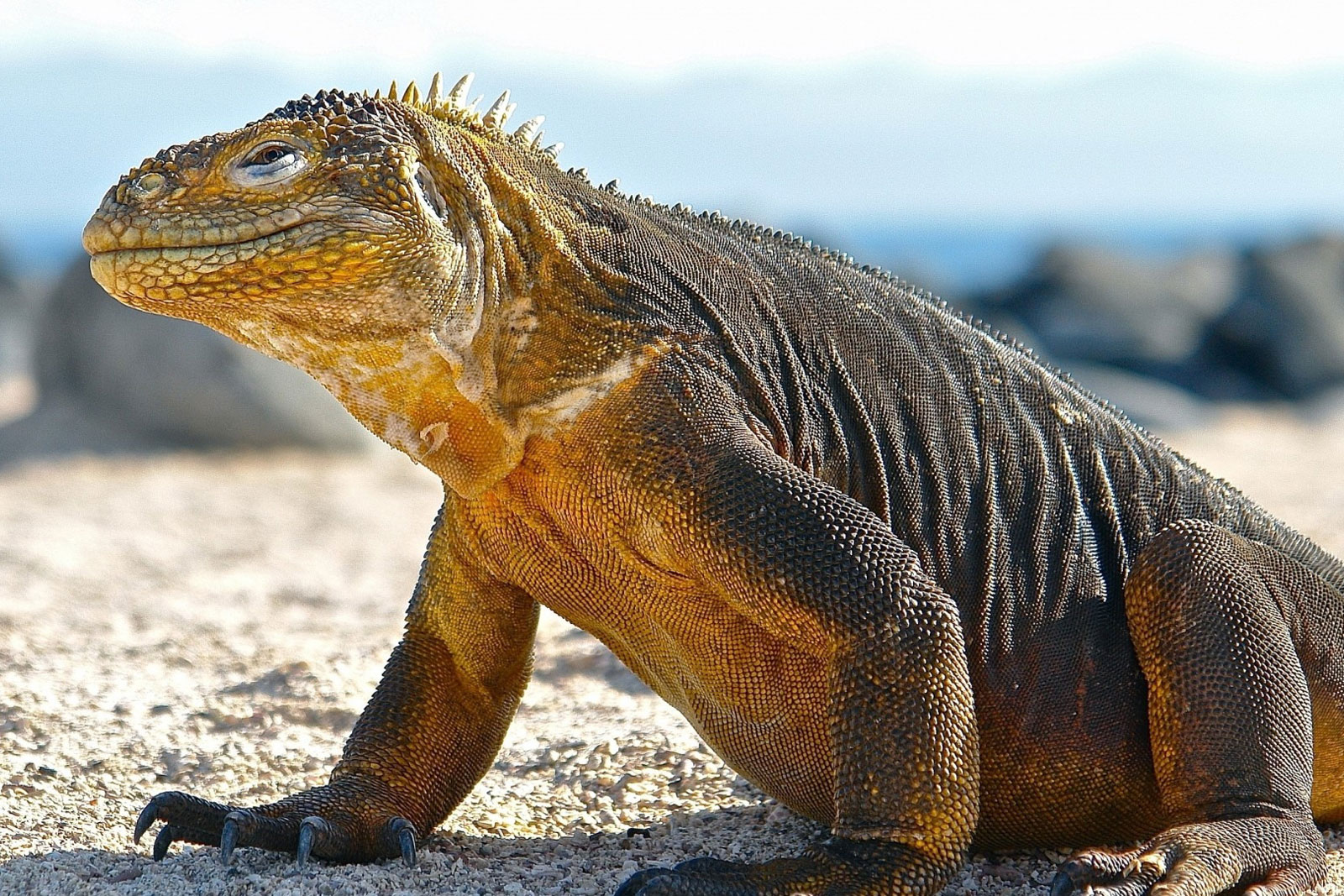As Galapagos Islands wildlife tours take center stage, this opening passage beckons readers into a world teeming with unique wildlife and breathtaking natural wonders. Delve into the heart of the Enchanted Islands, where every encounter promises a glimpse into the pristine beauty and evolutionary marvels that have captivated explorers for centuries.
From the majestic giant tortoises to the playful sea lions and the prehistoric-looking marine iguanas, the Galapagos Islands offer an unparalleled opportunity to witness the wonders of nature up close. Join us on an exploration of these extraordinary islands, where wildlife encounters await at every turn.
Introduction
The Galapagos Islands, a volcanic archipelago in the Pacific Ocean, are renowned for their unique and diverse wildlife. The islands' isolated location has allowed for the evolution of numerous endemic species, including the iconic giant tortoises, marine iguanas, and flightless cormorants.Wildlife
tours play a crucial role in exploring and understanding the islands' biodiversity. These tours offer visitors the opportunity to observe and learn about the unique adaptations and behaviors of the Galapagos' inhabitants. By providing guided experiences, tours help raise awareness about the importance of conservation and the need to protect the islands' fragile ecosystem.
Wildlife Encounters
The Galapagos Islands offer an unparalleled opportunity to encounter a diverse array of wildlife species, many of which are found nowhere else on Earth. These include giant tortoises, marine iguanas, sea lions, and a multitude of bird species.
Giant Tortoises
Giant tortoises are one of the most iconic species of the Galapagos Islands. These gentle giants can live for over 100 years and can weigh up to 500 pounds. They are herbivores and spend their days grazing on vegetation.
Marine Iguanas
Marine iguanas are the only lizards in the world that can swim in the ocean. They feed on algae and can dive up to 60 feet deep. Their unique adaptations allow them to withstand the harsh saltwater environment.
Sea Lions
Sea lions are playful and social animals that are often seen swimming and playing in the waters around the Galapagos Islands. They are skilled swimmers and can dive up to 1,000 feet deep.
Tour Types and Itineraries
Exploring the Galapagos Islands offers an array of wildlife tours tailored to diverse preferences and interests. From land-based adventures to immersive marine encounters, each tour type unveils unique aspects of this extraordinary ecosystem.
Land-based tours immerse visitors in the terrestrial realm, providing close encounters with iconic species such as giant tortoises, marine iguanas, and flightless cormorants. These tours often involve guided hikes and wildlife observation from designated trails and viewpoints.
Boat-based Tours
Boat-based tours venture into the surrounding waters, offering unparalleled opportunities to witness marine life. Cruises range from day trips to multi-day expeditions, allowing guests to explore secluded coves, volcanic landscapes, and pristine coral reefs.
Snorkeling and Diving Excursions
For an underwater perspective, snorkeling and diving excursions reveal the vibrant marine world beneath the surface. Guided snorkeling adventures allow participants to interact with sea turtles, sea lions, and a myriad of colorful fish species. Diving excursions, suitable for certified divers, delve deeper into the underwater realm, showcasing marine life in its natural habitat.
The choice of tour type depends on individual interests and preferences. Land-based tours provide intimate encounters with terrestrial wildlife, while boat-based tours offer a broader perspective of the islands' diverse habitats. Snorkeling and diving excursions unveil the hidden wonders of the marine ecosystem.
Wildlife Conservation
The Galapagos Islands are a unique and fragile ecosystem that is home to a wide variety of plant and animal species, many of which are found nowhere else on Earth. The islands' wildlife is a major tourist attraction, but it is also under threat from a number of factors, including habitat loss, pollution, and invasive species.
Wildlife conservation is essential to protecting the Galapagos Islands' unique ecosystem. Conservation efforts focus on protecting the islands' habitat, reducing pollution, and controlling invasive species. Conservation organizations and initiatives play a vital role in these efforts.
Experience the breathtaking Zhangjiajie National Forest Park glass bridge , suspended high above the lush forest canopy. For an unforgettable adventure, embark on a Machu Picchu guided group tour , exploring the ancient ruins nestled amidst the Peruvian Andes. Witness the majestic Borobudur Temple bathed in golden light during a Borobudur Temple sunrise tour . And for an iconic American landmark, secure your Statue of Liberty tickets for a visit to the symbol of freedom and democracy.
Conservation Organizations and Initiatives, Galapagos Islands wildlife tours
There are a number of conservation organizations and initiatives that are working to protect the Galapagos Islands' wildlife. These organizations include the Galapagos National Park Service, the Charles Darwin Foundation, and the World Wildlife Fund. These organizations work to protect the islands' habitat, reduce pollution, and control invasive species.
- The Galapagos National Park Service is responsible for managing the Galapagos National Park, which covers over 97% of the islands' land area. The Park Service works to protect the islands' wildlife and habitat, and to promote sustainable tourism.
- The Charles Darwin Foundation is a non-profit organization that conducts scientific research on the Galapagos Islands. The Foundation's work helps to inform conservation efforts and to raise awareness of the importance of the islands' wildlife.
- The World Wildlife Fund is a global conservation organization that works to protect the world's wildlife and habitats. The WWF supports a number of conservation projects in the Galapagos Islands, including efforts to protect the islands' marine life and to control invasive species.
Planning and Tips
Planning a Galapagos Islands wildlife tour requires careful consideration to ensure a memorable and fulfilling experience. Factors to consider include tour operators, itinerary options, and personal preferences.
The Zhangjiajie National Forest Park glass bridge in China offers a breathtaking experience, with its transparent floor revealing stunning views of the lush forest below. Meanwhile, the Machu Picchu guided group tour takes visitors to the ancient Incan city nestled amidst the Andes Mountains.
For an unforgettable sunrise experience, the Borobudur Temple sunrise tour in Indonesia offers a glimpse of the magnificent Buddhist monument as the sun rises over the surrounding landscape. Finally, securing Statue of Liberty tickets allows visitors to explore the iconic symbol of freedom in New York City.
When selecting a tour operator, research their reputation, experience, and safety record. Consider the size of the group, as smaller groups offer more intimate wildlife encounters. Booking in advance is crucial, especially during peak season.
Packing and Preparation
- Pack light clothing suitable for warm, humid weather.
- Bring waterproof gear for occasional rain.
- Consider a sturdy pair of hiking shoes for exploring the islands.
- Bring sunscreen, sunglasses, and a hat for sun protection.
- Pack essential toiletries and any necessary medications.
Maximizing Wildlife Encounters
- Book tours during the dry season (May-December) for optimal wildlife viewing.
- Choose tours that include guided nature walks and snorkeling or diving excursions.
- Respect wildlife by maintaining a safe distance and avoiding disturbing their natural behavior.
- Bring binoculars or a camera with a zoom lens for wildlife photography.
- Stay informed about the islands' conservation efforts and support sustainable tourism practices.
Conclusion
As the sun sets on your Galapagos Islands wildlife tour, the memories you've made will linger long after your return home. The islands' unique ecosystem, diverse wildlife, and breathtaking landscapes will forever hold a special place in your heart. Whether you choose to embark on a land-based adventure, set sail on a boat-based expedition, or explore the underwater world through snorkeling or diving, the Galapagos Islands offer an unforgettable experience that will inspire and amaze.
FAQ Compilation: Galapagos Islands Wildlife Tours
What is the best time to visit the Galapagos Islands?
The Galapagos Islands can be visited year-round, but the best time to experience the wildlife is during the dry season, from June to November.
What types of wildlife can I see on a Galapagos Islands tour?
The Galapagos Islands are home to a wide variety of wildlife, including giant tortoises, marine iguanas, sea lions, penguins, and many species of birds.
How do I choose a Galapagos Islands tour operator?
When choosing a Galapagos Islands tour operator, it is important to consider their experience, reputation, and commitment to conservation.


